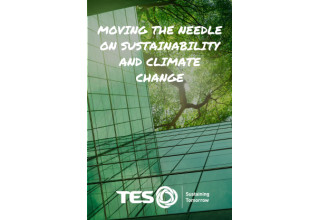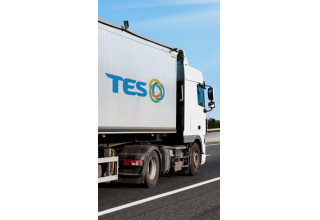
Recognition from a leading global consortium on emission targets establishes TES as an industry leader committed to sustainability.
SINGAPORE, December 6, 2023 (Newswire.com) - The Science Based Targets initiative (SBTi) has acknowledged TES for setting a net-zero emissions target, recognizing the company’s commitment to sustainability and climate action.
TES, founded in 2005, is recognized as the world’s largest provider of IT asset disposition services, with 43 facilities serving more than 100 countries.
SBTi is a collaboration of the United Nations Global Compact, World Resources Institute, World Wildlife Fund, and CDF that defines and promotes best practices in emissions reduction. SBTi aims to encourage companies to set science-based targets to reduce their greenhouse gas emissions (GHGs). More than 2,000 organizations worldwide have committed to emissions targets through SBTi’s standards.
TES has committed to setting near- and long-term company-wide emission reductions that meet the SBTi Net-Zero Standard at the pace and scale required by climate science. In response to the SBTi’s urgent call for corporate climate action, TES will align with the targets of the Business Ambition for the 1.5°C campaign.
Verification by SBTi is important because it ensures that the company's goals align with the latest scientific research on climate change. This means that the goals are based on the level of emissions reductions needed to limit global warming to less than 2°C, which is the target set by the Paris Agreement.
The TES commitment to net-zero emissions is one of 17 Sustainable Impact Goals in its recently released 2022 Sustainability Report, titled “Our Journey To Sustaining Tomorrow.”
“We are committed to Sustaining Tomorrow because we believe our future is linked to the success of people and our planet. Commitment to net zero is important for us because it demonstrates leadership in our industry and our dedication to taking action on climate change,” said Alvin Piadasa, TES group sustainability director.
“SBTi’s approval of our planned emissions targets shows our dedication to reducing our carbon footprint and mitigating the effects of climate change,” Piadasa said. “This is particularly important as the world faces increasing environmental challenges and pressure to reduce greenhouse gas emissions.”
TES’s sustainability strategy is underpinned by three principles: protect, preserve and provide. We protect our customers' privacy, brand, intellectual property, and data, while working to preserve our natural environment and promoting the responsible usage of scarce resources and we strive to provide a secure, diverse, and inclusive workplace and community where everyone can flourish. TES believes that enterprise and social progress cannot be sustained by environmental degradation and that only responsible consumption and production can sustain a better tomorrow.
Research from the Carbon Trust indicates that customers’ increasing expectation that companies must commit to climate action or risk losing business to competitors with stronger sustainability performances.
“Taking action on environmental issues is no longer just a matter of ethics. It is crucial for survival in the business world, and corporations are waking up to the fact that sustainability and profitability can go hand in hand,” Piadasa said. “TES is committed to creating a roadmap to meet ambitious and necessary climate goals and will take proactive steps towards achieving them.”
To learn more about TES and its commitment to sustainability and net-zero emissions, visit www.tes-amm.com.
About TES
Since our formation in 2005, TES has grown to become a global leader in sustainable technology services and bespoke solutions that help clients manage the commissioning, deployment, and retirement of technology devices and components.
We provide comprehensive services for technology devices throughout their lifecycle — from deployment to decommissioning to disposition — all the way through to recycling and end-of-life repurposing. It includes innovating new processes to leverage the value locked in assets if they are to be recycled, such as our proprietary lithium battery recycling process, which extracts scarce materials from used batteries at purity rates high enough that they can be reused in the manufacturing supply chain.
Our mission is to make a decade of difference by securely, safely, and sustainably transforming and repurposing one billion kilograms of assets by 2030. Our 40 owned facilities across 22 countries offer unmatched service-level consistency, consistent commercials, lower logistics costs, local compliance experts in-region, support in local time zones and languages, and a deep understanding of trans-boundary movement globally.
Source: TES
Share:




